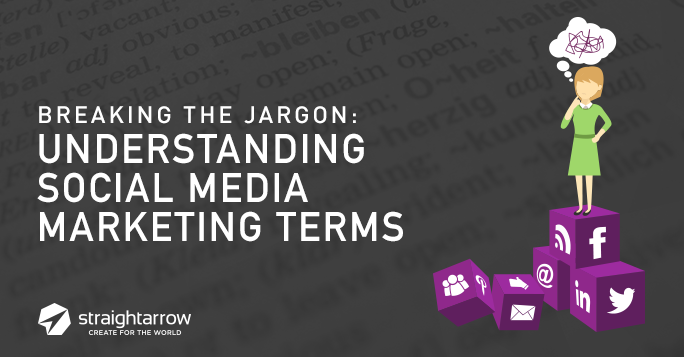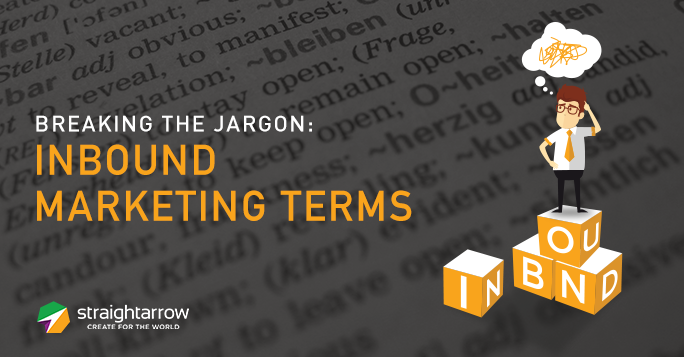
Once considered a curiosity of the digital age, social media now figures in most companies’ marketing strategies. Boasting relatively low costs and a wide potential audience of over two billion active users, the appeal of social media platforms is self-evident.
The challenges are there, too, of course. With such a large and active user base hosted on a plethora of platforms, finding a voice that stands out is a test of any marketer’s mettle. But when it comes to voice, learning the language is always a good starting point. Building on our previous post on inbound marketing terms, we’ve compiled a list of 15 of the most commonly used terms in social media marketing—enough to bring you up to speed and into the conversation.
About Tab/Bio
Most social media platforms provide users with a relatively static space on which to post information. In Facebook, for instance, it’s the About tab, while Twitter and Instagram have the Bio.
The fact that this space is relatively static—it changes when you choose to change it—it provides a point of reference for information and other content. A post or tweet, for instance, might direct viewers to that section to view further information or access a link.
Algorithm
An algorithm is a formula that governs certain calculations or decisions. Algorithms are widely used in computer science and are prevalent in most forms of social media. Algorithms determine things like the composition of certain newsfeeds (for platforms that don’t simply use chronological ones), the order in which search results are displayed, and the kinds of suggestions social media platforms give users—who to follow, or whom you might know, for example.
Analytics
This refers to the systematic analysis of data to discover relevant trends or patterns; it may also refer to the information gained from such analysis. Certain social media websites have built-in analytics tools, such as Facebook Insights and Twitter Analytics. Also available, however, are third-party programs that allow monitoring and analysis of analytics across multiple social media platforms.
Clickthrough Rate
This is the number of times a link in a post was clicked, compared to the total number of impressions (see below) that post received.
Engagement
Broadly speaking, engagement refers to the number of interactions (see below) a piece of content receives from users.
Followers
These are users who have indicated that they would like to receive certain updates about your posts on a social media platform. At its simplest, this usually means they will receive alerts when you post, or that your posts will show up more often on their newsfeeds (see below). Sometimes, content can be restricted so only followers—or other types of contacts, depending on the platform—can see it.
Groups & Communities
Most social media platforms allow you to organize your contacts into various groups or communities. These categories usually allow you to send messages targeted to particular user groups, or to change which of the content you post certain contacts can or cannot see.
Hashtag (tag)
A hashtag is a word or phrase preceded by a ‘#’ that serves as a label for the tagged content, making it easier to organize or search. Hashtags in social media gained traction first on Twitter. Usage then spread, and they are now used by several social media platforms.
Hashtags are part of a larger practice of tagging and, more specifically, a practice called folksonomy, which allows users to define the categories into which they sort content, especially that which they generate themselves.
Impressions
An impression refers to each instance a piece of content is ‘fetched’ from its source and displayed. Each time a post shows up on a user’s newsfeed (see below) counts as an impression.
Interaction
An action a user takes in response to content posted. This may include clicking a link, enlarging pictures, leaving a comment, sharing or re-posting, or indicating approval (e.g. Facebook likes, Twitter favorites).
Negative Feedback
This refers to unfavorable responses to your social media activity. Not limited to comments or other verbal expressions, negative feedback can involve posts getting blocked or tagged as offensive, or your page being unfollowed.
Newsfeed
Usually, a social media platform’s homepage is where other users’ posts are displayed. What content is shown on a newsfeed and in what order it is shown, are defined by algorithms unique to each social media platform. The exact term may vary, as well—Twitter’s newsfeed is called the timeline.
Organic
This describes the content that is not promoted with the use of paid services. Anything posted free counts as organic. Where metrics are concerned, organic measurements (e.g. organic reach, organic engagement) account for cases where users saw or interacted with content through newsfeeds or shares/re-tweets/re-posts from other contacts, rather than through paid promotion.
Reach
A point of data that shows the potential audience for your content. This counts the number of users who might see your content, as opposed to impressions, which counts instances of content showing up, even multiple times to a particular user.
Referrals
This measures the number of times social media brings people to your website. In many cases, social media serves as a way to attract people to your website, which serves as the primary site for lead conversion. For this reason, measuring referrals to the website is important in many social media strategies.











Comments